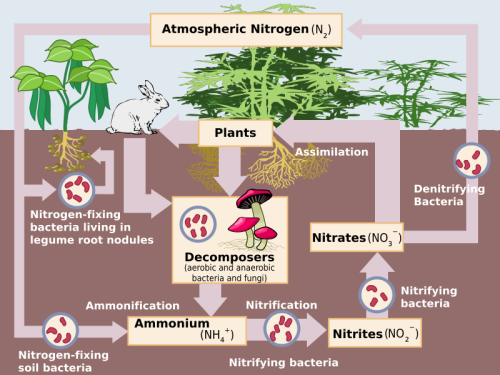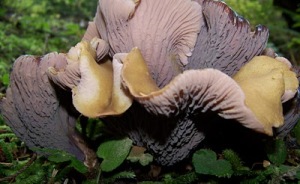“Fava Beans are wonder plants, not only do they grow delicious fat meaty beans, they fix nitrogen, essentially fertilizing your garden for you! MAKE SURE to plant a thick fava bean cover crop in your garden this winter ”
I can’t tell you how many times I’ve heard and uttered this phrase in the last couple of years. I’ve practically forced fava beans and clover down friend’s throats, sneaking into gardens late at night to sow row after row during the winter months. The nitrogen-fixing missionary, saving depleted gardens from ruin. Last Sunday after listening to a fellow student talk about Vetch’s “nitrogen-fixing” abilities a slow, terrifying realization crept in:
I HAVE NO IDEA HOW A PLANT ACTUALLY “FIXES NITROGEN”
I felt like a doctor who flunked most of medical school, prescribing potent medications after reading glossy pharmaceutical adds in magazines. In an effort to restore my integrity and investigate this astonishing process, I’ve compiled a detailed microbiological summary of nitrogen-fixation.
Highschool Flashback! Let’s start with the Nitrogen Cycle:

The Nitrogen Cycle
78% of our atmosphere is composed of Nitrogen gas (N2). Plant life cannot access gaseous nitrogen and to useful to living organisms it must first be “fixed” transformed form a gas into a solid. This can happen in 3 and in more recent times 4 ways.
1. LIGHTNING STRIKES – start erecting lightning rods over your garden in the winter. Bolts of energy fix a small percentage of earth’s solid nitrogen.
2. Free floating Nitrogen-fix Nitrogen using a special enzyme.
3. Nitrogen-fixing bacteria living in symbiotic relationships with most legumes and a few other scattered plant species fix nitrogen into Ammonia (NH4+), a usable form for plants and other nitrifying bacteria

Fritz Haber
4. Fritz Haber and Carl Bosch completely altered our species course of development when they discovered how to fix nitrogen in the lab. Many argue this was the most important and influential discovery of modern science and ammonia derived from the Haber-Bosch method, support a third of our world’s population. Fritz was responsible for first demonstrating the process in 1909 which Bosch improved and standardized. The Haber-Bosch method requires an immense amount of energy, but provides ALL of the ammonia and nitrogen rich fertilizers we so heavily depend on in modern agriculture. Each year 100 million tons of fertilizer produced with the Bosch method are added to our increasingly anemic and disappearing topsoil. Haber went on to produce nitrate bombs, chlorine and Zyklon B used in Germany’s extermination camps. Evil Science.
Symbiotic Nitrogen-Fixation
All plants require nitrogen (N) as a fundamental building block of nucleic acids, proteins and other nitrogen based compounds. Unlike carbon-dioxide, plants cannot simply breath in atmospheric Nitrogen, it must be extracted from the soil. MILLIONS and MILLIONS of dollars and barrels of oil are mashed together by a few large corporations to provide most of the fertilizer used by commercial farmers. Fertilizer is typically high in nitrogen, super charging the plants and creating this kind of obscenity:

Big Boy
Most of the best nitrogen fixers are in the Leguminoase (legume) family. Only a handful of other non-leguminous species can fix nitrogen. Spread throughout many different plant families, they are typically trees or herbaceous shrubs such as the alder tree.
Farmers have been rotating crops with legumes for thousands of years to add nitrogen into their soil. During the 17th century rather than letting a field sit fallow a four crop rotation with clover was used in many parts of Europe. Today it is common practice for organic and non-organic farmers to sow a nitrogen-fixing cover crop during the winter months.
It is important to give credit where credit it is due. A pea plant cannot actually fix nitrogen for itself and its neighbors, but it does form a symbiotic relationship with Rhizobium leguminosarum biovar viciae, a bacteria that forms nodules on the Pea’s Roots.
Here is how it works:

Root Hair Infection
As the Pea Plant’s roots establish, they emit flavinoids that attract and encourage growth of a particular strain of rhizobium bacteria co-adapted to grow with the pea. Rhizobiums free-floating in the soil cannot fix nitrogen, they must couple with a legume in a mutualistic exchange. The flavinoids released by the Pea roots into the soil activate Nod genes in the bacteria which will cause effective strains to begin nodule formation. To form this symbiotic relationship the bacteria must first “infect” the Pea’s root hairs. Binding to individual hairs, the Rhizobiums secrete Nod factors which cause the root hair to curl. This allows the bacteria penetrate the root hair and introduce an infection thread which infiltrates root cell tissue and disperses additional Rhizobia. Clumps of Rhizobia undergo a morphological change and develop into Bacteriods. Clumps of bacteriods form the white nodules found on a legume roots a few weeks after rhizobia infection.

Rhizobium Nodules
Rhizobia use nitrogenase, an incredible catalyst to overcome the immense activation energy required to split the N-N triple bond.
N2 + 6 H + energy → 2 NH3
Nitrogenase necessitates a great deal of chemical energy which it receives from the plant in form of proteins and carbohydrates. Rhizobia in the bacteriods turn atmospheric nitrogen into ammonia NH4+, a form of nitrogen that plants can easily use. The pea plant also provides Legahaemoglobins that bind to oxygen molecules providing oxygen for rhizobia respiration. If you ever cut open one of the white nodules on your legumes roots, you may see a red tint to the nodules innards. Like Hemoglobin, legahaemoglobin is red when exposed to oxygen.
Even when harvested Nitrogen-Fixing plants can enrich your soil. I find the best way to use these plants is to “chop and drop” as your winter cover crop is just beginning to flower, chop all the favas and vetch down letting the plant decompose on top of your soil. A lot of the nitrogen is stored in the plant body and will go to waste if you let the plant flower. Unless of course you want to harvest some fava beans. I will also interplant or lay a ground cover of nitrogen-fixing plants in my spring and summer gardening. Use these plants as much as possible!














